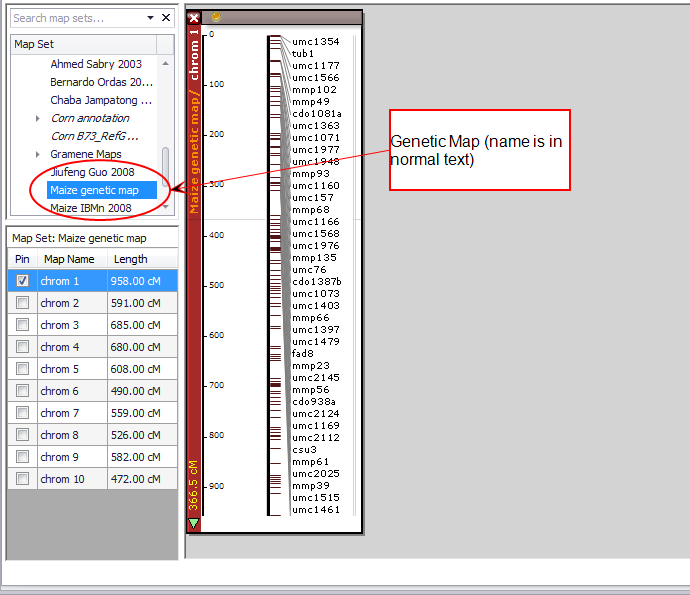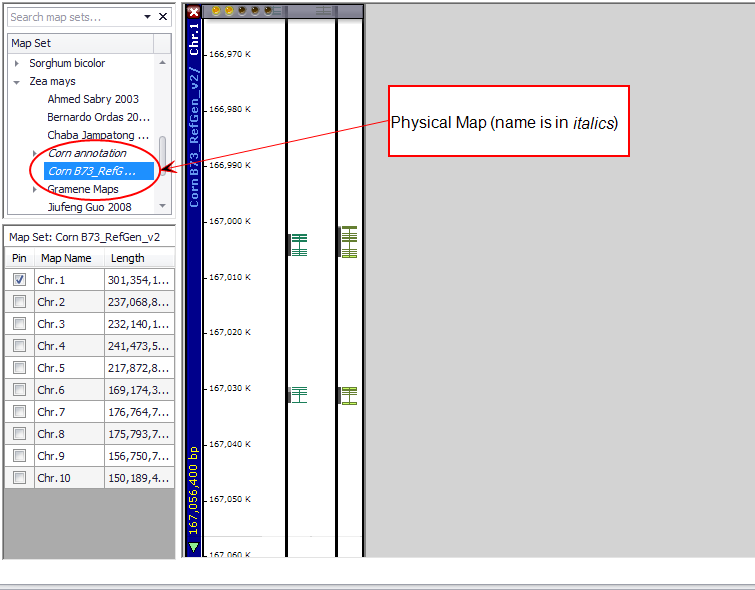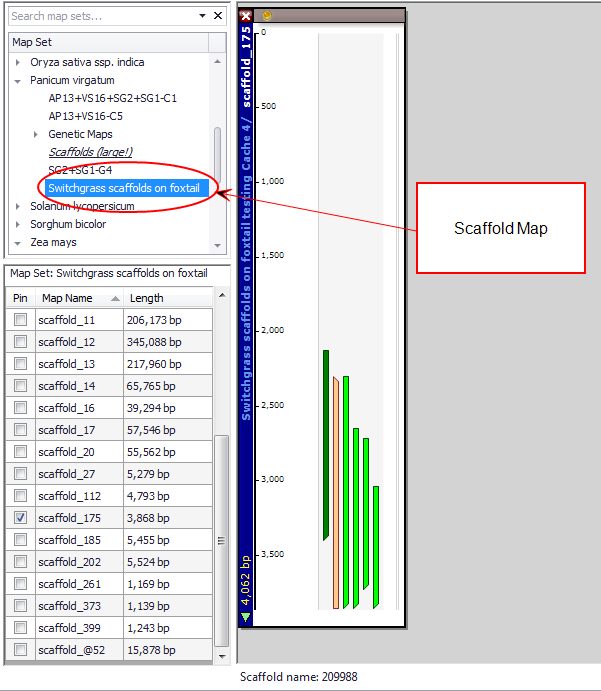Map Types
Genetic (Linkage) Map
A Genetic (Linkage) Map is a map that lists genetic markers and their positions in linear order on a centiMorgan distance scale as shown below. This type of map is commonly used for species populations that do not have a physical reference genome sequence or has gone through an experiment where a structured population was used to determine genetic recombination of a set of markers.

Physical Map
A Physical Map is a map that has been assembled using DNA sequence. These physical maps are normally extensively researched and developed by academic and government sponsored research efforts involving next-generation or Sanger sequencing generated information. Sets of physical maps are shown in italics. The distance unit for a physical map is the nucleotide or base pair (bp).

Scaffolds
A scaffold is a map that shows an ordered and oriented set of contigs. Scaffolds contain gaps, but there is typically some evidence to support the contig order, orientation, and gap size estimates. The distance unit for a scaffold is the nucleotide or base pair (bp).

The scaffold maps can be of two types: based on a genetic map or based on a sequence. The scaffolds represent short DNA sequences that are not exactly placed on the chromosome. To be able to roughly derive their placement one can use common markers between large genetic map (or markers mapped on chromosome sequence) and individual scaffolds. For example, if you see that a scaffold has the same markers that are located at the beginning of a chromosome, you can tell that this scaffold most likely belongs to the beginning of the chromosome. The result is a roughly-ordered list of scaffolds with their approximate locations. The positions can be in cM or in bp, but even when it is based on bp (sequence) there is no underlying sequence that could be shown by Persephone.
